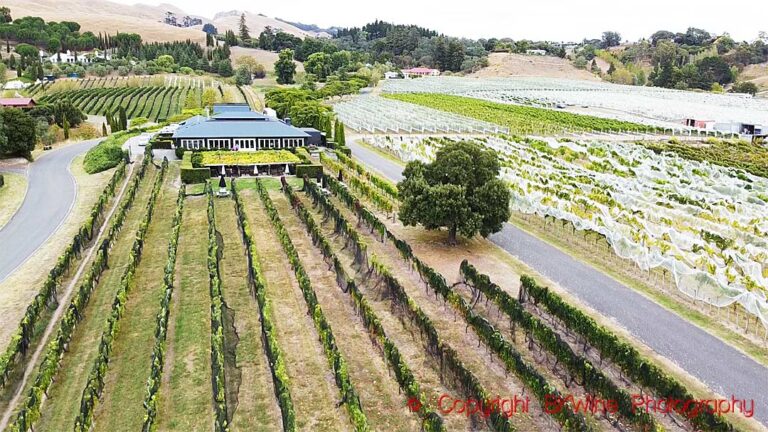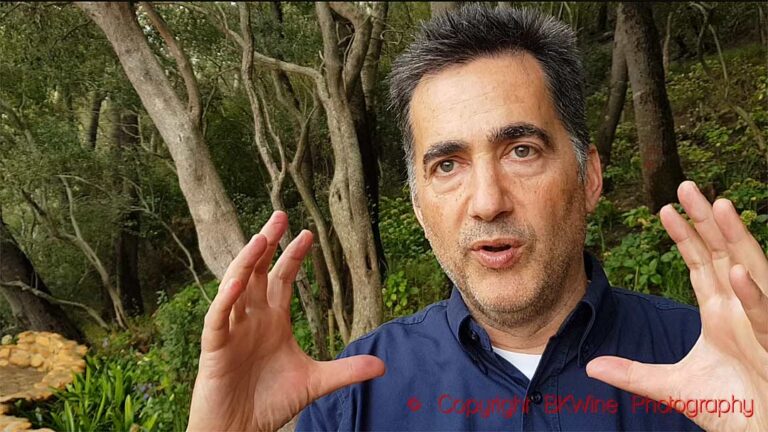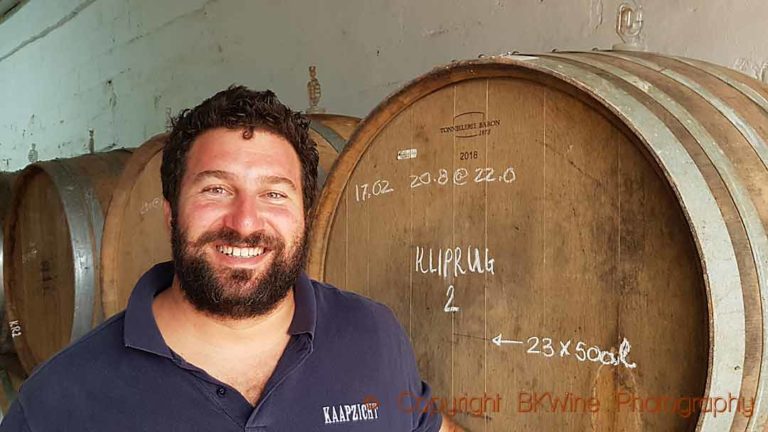It can be quite cold in Finger Lakes in western New York. It used to be popular to plant the American grapevine Vitis labrusca here since it is can take the low temperatures. The unfortunate thing is that they wines are not always particularly good. But since the 60s, when a pioneer started to grow quality grapes there, Vitis vinifera, the wine-fame of the region has grown. Ravines Wine Cellars is one of the producers who have been very successful with some “European” cold-climate grapes. Britt met with the founder of Ravines, Morten Hallgren, and tasted and talked about his wines.
We tasted our first wines from Finger Lakes just about a year ago. Recently I had the chance to taste a few more when Morten Hallgren from Ravines Wine Cellars visited Paris. We met over lunch at the excellent restaurant Le Bistrot du Sommelier on the Grands Boulevards.
Finger Lakes is a wine region in the northern part of New York State, right on the border with Canada. Around 120 producers make wine here in a beautiful environment. But the climate is cool and often a challenge for wine producers. The vines grow around the finger-shaped glacial lakes, of which the two largest, Seneca and Cayuga, are among the deepest in North America.
This is a longer version of an article published on Forbes.com.
There are some 120 wineries in the Finger Lakes region. The vineyards extend over 4,500 hectares (11,000 acres) which makes it a little bit smaller than Chablis in France (5,800 ha with 380 domains). It is spread out over a quite large area though, stretching 150 km east to west. They make wine from several different grape varieties, riesling, gewurztraminer, pinot noir, cabernet franc, and merlot, to mention the most common. But there are also still plantings of the today less popular American grape Vitis labrusca.
Morten Hallgren has his roots in Denmark, but he grew up in France. His parents owned a vineyard in Provence. This explains both his fluent French and his interest in wine. He studied winemaking and viticulture at the well-known Ecole Nationale Supérieure d’Agronomie in Montpellier (ENSAM) and then worked at Château Cos d’Estournel in Bordeaux and at wineries in Texas and North Carolina. In 1998, he ended up in the Fingers Lakes region as the responsible winemaker at Dr Konstantin Frank Cellars.
And there, in Finger Lakes, he remained. Morten and his wife Lisa founded Ravines Wine Cellars in 2001. “It’s a special region,” says Morten, “with great challenges, but also a unique region. It is thanks to the lakes that we can make wine here. They mitigate the cold climate.” Without the lakes it would be too cold. And it is around the warming lakes that the vineyards are concentrated.
Ravines has been growing ever since its start 20 years ago. Morten and Lisa now have 50 hectares, a large wine estate in the Finger Lakes. They invest a lot in wine tourism and hold events with wine tastings and wine and food.
Morten takes his grapes from three different vineyards, all located around Lake Seneca. The Argetsinger vineyard is a steep slope on the lake’s southeast shore, whereas the 16 Falls vineyard is on the east side of the deepest part of the lake. The third, White Springs vineyard, is on the northwest side of the lake and adjacent to Ravine’s winery and wine cellar. The different terroirs give their own special character to the wines, says Morten.
White Springs Vineyard is a bit special. Here they use a pruning method suitable for cool climates, called lyre. The foliage is divided and shaped like an open V, which gives a lot of sun to both the leaves and the grape bunches. The grapes ripen better and easier. Lyre was invented by Alain Carbonneau, researcher and professor and also Morten’s teacher in Montpellier.
From labrusca to vinifera
Traditionally, native American grape varieties have been grown in Finger Lakes, often Vitis labrusca. These grapes are adapted to the climate and can take the cold winters. However, the wines from these grapes do not generally appeal to any wine lover today. Some producers use hybrids, i.e., crossings between a European grape (Vitis vinifera) and an American Vitis. The new generation of hybrids are resistant to the cool climate and are getting closer and closer to the aroma profile of European grapes.
But it is the wines from Vitis vinifera grapes that have made Finger Lakes famous in recent decades.
In the 1960s, Dr Konstantin Frank, mentioned above, ventured to grow Vitis vinifera. He came originally from Ukraine and had 30 years of experience in viticulture, not least in cool climates. He emigrated to the United States and arrived in New York in 1951.
There he started planting European grape varieties in the eastern United States in 1958 and subsequently ignited the “Vinifera Revolution” in the Finger Lakes. To make Vitis vinifera grapes survive in the climate was, according to him, just a matter of grafting it on a suitable rootstock and choosing early-ripening grapes, like riesling. He researched and experimented, planting an enormous variety of grapes, perhaps just a few vines of each, to see how they fared.
Morten also focuses on Vitis vinifera, riesling not least. He also grows Bordeaux grapes, although it is not always easy. You sense the cool climate in all his wines. They have fresh acidity and vitality in common.
The Ravines Wine Cellars wines
Right now, 10 % of Morten’s production is sparkling wine, and demand is constantly increasing. In Ravines Wine Cellars Brut 2013, he blends chardonnay and pinot noir. It ages for six years before being disgorged. The acidity is high, but the body and the lovely mouthfeel give balance. I guessed at zero dosage, but it has 6 grams of sugar. (39.95 USD)
Riesling is the signature grape of Finger Lakes, and Morton has become known for his dry riesling. It is not uncommon for producers to leave some residual sugar in their riesling wines, a style that many consumers appreciate. But Morten knew from the beginning that he wanted to make dry riesling, and he has great success with this style.
Ravines Wine Cellars Dry Riesling 2018 is crispy fresh with citrus and pineapple fruit. It is delicious and refreshing with a pleasant bitterness at the end. The wine ages for a while on its lees. (19.95 USD)
Cabernet franc is spreading around the globe and has also found its way to the Finger Lakes. The grape thrives in cool climates, but Finger Lakes can nevertheless be a trial; sometimes cabernet franc ripens around the 1st of November. In Ravines Wine Cellars Cabernet Franc 2019, we have the typical herbal character of cabernet franc, high acidity, refreshing fruit, and red berry crunchiness. (24.95 USD)
The prestige cuvée Ravines Wine Cellars Maximilien 2017 is made with cabernet sauvignon and merlot, with a slight predominance for merlot. Refreshing cherry fruit, some cedarwood, tobacco and fresh herbs, a certain lightness in the body but also some tannin. It strikes me as very well balanced with the oak aromas in the background. The juice ferments in open tanks, and the different vineyards are kept separate to control the extraction.
“It is important,” says Morten, “to be careful with the oak ageing”. Cabernet franc in the Finger Lakes gives a relatively light wine with elegance. It is better to accentuate the fruit, not the oak. (28.95 USD)
Morten also likes gewurztraminer. “It is a risky grape to grow here, he says. “It does not thrive when it is too cold, but it produces interesting wines.” He gives the must some skin contact at cool temperatures before the grapes are pressed. The grapes are pink, Morten points out, and the juice that comes out of the press is pink. But during the vinification, the colour disappears.
Ravines Wine Cellars Gewurztraminer 2020 has a lively acidity and lovely vitality with exotic fruit. The end is dry but not crispy dry. There are 8 grams per litre of residual sugar, balancing the high acidity. Compared to many gewurztraminer from Alsace, it is both drier and more discreet. (22.95 USD)
I ask Morten what the Americans eat with this wine? Asian food, preferably with ginger, is the quick answer and then it comes, more unexpectedly: “This is a classic wine with the turkey for Thanksgiving. “I would never have guessed.
Read what we have written about the Finger Lakes: Bone-dry riesling and more from cool-climate Finger Lakes, with a focus on sustainability | Britt on Forbes.
Prices are from Ravines Wine Cellars’ webshop.

















